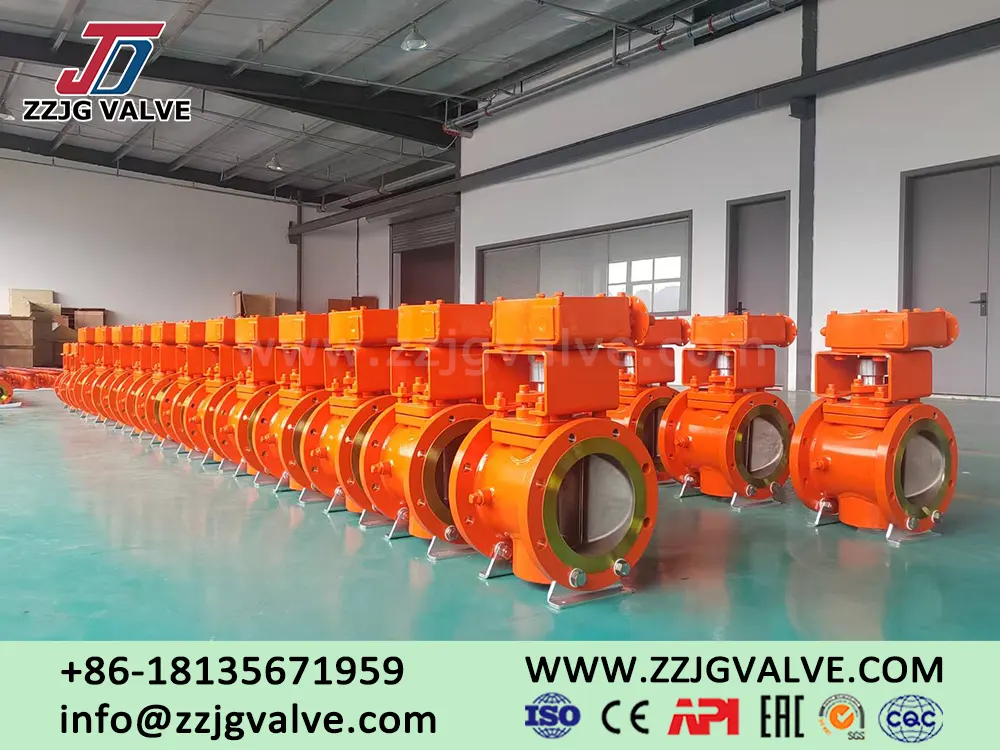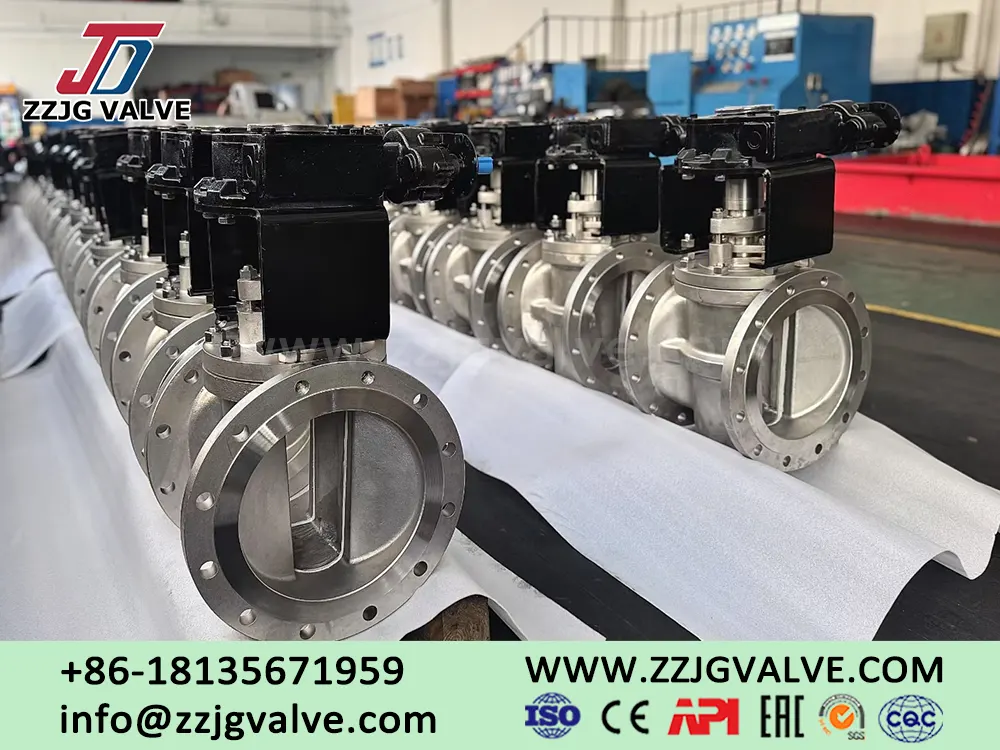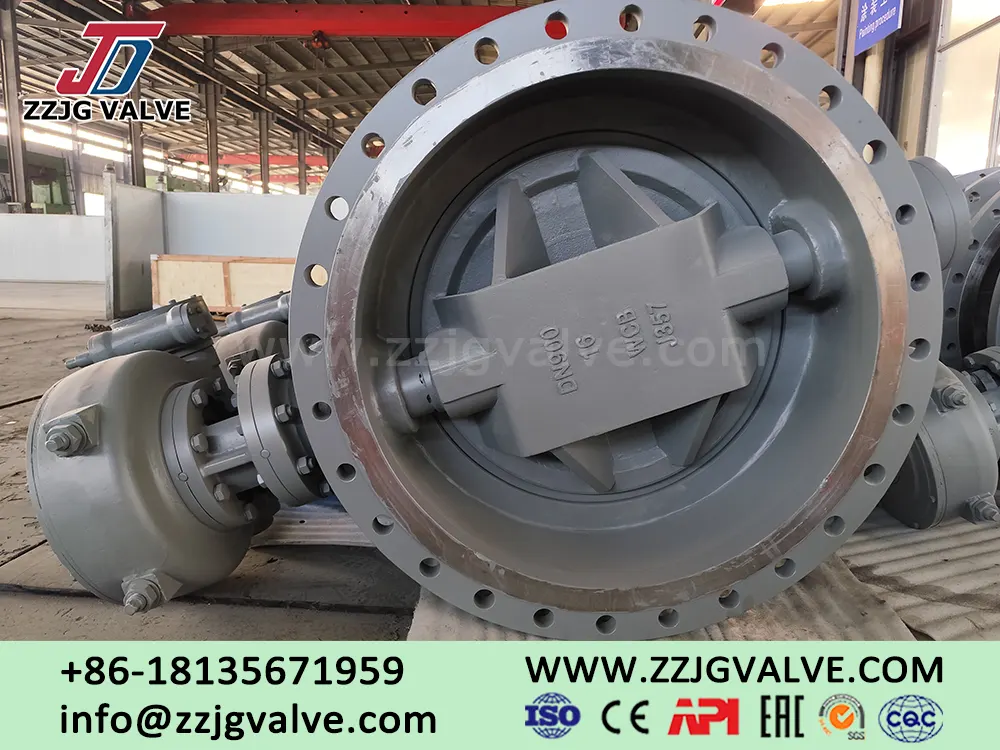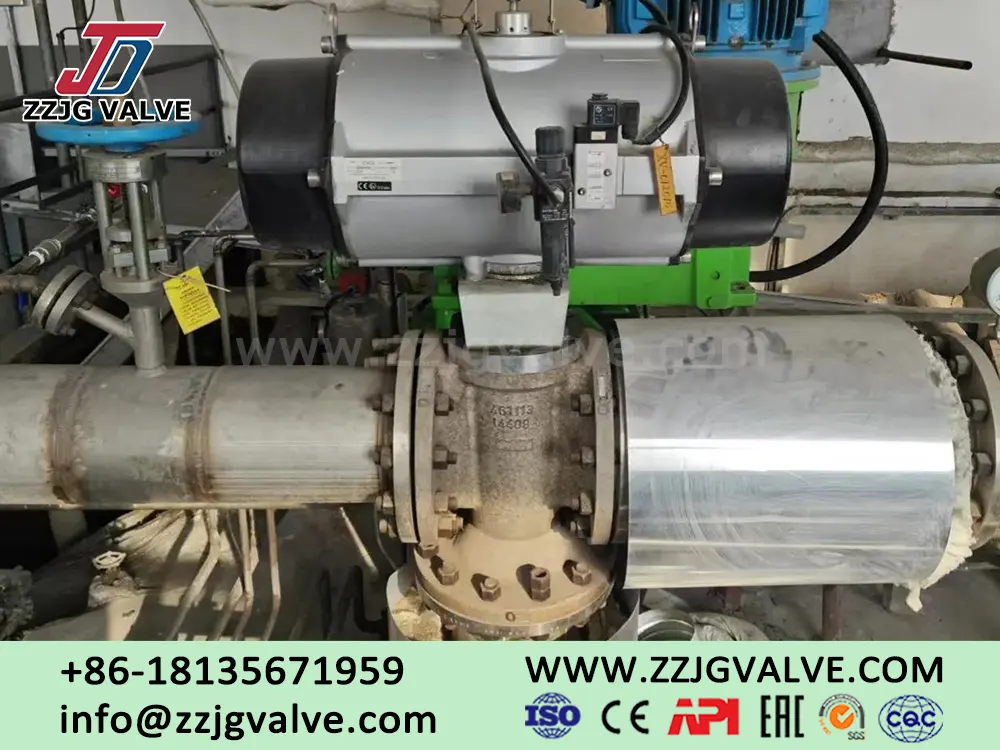Different Types of Butterfly Valves Introduction and Features
Butterfly valves are important fluid control devices primarily used in industries such as water conservancy, chemicals, petroleum, and natural gas. Zhengzhou Jinggong is a professional manufacturer of butterfly valves with over 40 years of experience in butterfly valve production. The types of butterfly valves it produces include: metal hard-seal butterfly valves, special material soft-seal butterfly valves, centerline butterfly valves, single-offset butterfly valves, double-offset butterfly valves, triple-offset butterfly valves, quadruple-offset butterfly valves, manual butterfly valves, pneumatic butterfly valves, hydraulic butterfly valves, electric butterfly valves, lugged butterfly valves, welded butterfly valves, butt-welded butterfly valves, socket-welded butterfly valves, flanged butterfly valves, U-shaped butterfly valves, disc butterfly valves, ductile iron butterfly valves, carbon steel butterfly valves, stainless steel butterfly valves, and special material butterfly valves, each with their own distinct features.

ZZJG VALVE has selected the five main categories of butterfly valves for customers, providing an overview of their types and features.
1. Introduction and features by sealing type
Metal hard-seal butterfly valves: Utilize metal materials as sealing surfaces, offering excellent high-temperature and high-pressure performance; the sealing surfaces have good wear resistance and a long service life, making them suitable for high-temperature, high-pressure, and particulate-containing medium conditions.
Special material soft-seal butterfly valves: Use special elastic materials (such as rubber or PTFE) as sealing components, providing superior sealing performance with minimal leakage; they have good low-temperature performance, are suitable for normal-temperature, low-pressure conditions, and are easy to install and maintain with relatively low costs.
2. Introduction and characteristics by structural type
Centerline butterfly valve: The valve stem axis aligns with the butterfly plate centerline, featuring a simple structure and ease of manufacturing and maintenance; it has good sealing performance, is suitable for low-pressure, normal-temperature conditions, and has low flow resistance and strong flow capacity.
Single-offset butterfly valve: The valve stem axis is offset from the butterfly plate centerline, reducing friction between the butterfly plate and valve seat; superior sealing performance compared to centerline butterfly valves, suitable for medium- and low-pressure conditions with a broader medium temperature range.
Double-offset butterfly valve: The valve stem axis is offset from both the butterfly plate centerline and valve body centerline, reducing seal surface wear and enhancing sealing effectiveness; it is easy to open and close with low operating torque, suitable for medium-high pressure and large-diameter pipelines.
Triple-eccentric butterfly valve: Based on the double-eccentric design with an added conical eccentric design, it achieves zero leakage sealing with excellent sealing performance; it is resistant to high temperatures and pressures, suitable for harsh conditions, with a long service life and extended maintenance intervals.
Quadruple-eccentric butterfly valve: Optimizes eccentric parameters based on the triple-eccentric design to further reduce contact stress on the sealing surface; offers higher sealing reliability, suitable for extreme media, with strong operational flexibility and adaptability to large-diameter pipelines.
U-shaped butterfly valve: Features a U-shaped sealing structure along the edge of the butterfly plate, combining regulation and cutoff functions; offers high flow control precision and excellent sealing performance, suitable for applications requiring precise regulation.
Disc butterfly valve: Features a disc-shaped butterfly plate design, compact structure, and minimal space requirements; low flow resistance coefficient and high flow efficiency, easy installation, and suitable for various pipeline systems.
3. Introduction and characteristics by drive type
Manual butterfly valve: Operated manually via a handwheel or handle, with a simple structure and low cost; suitable for small diameters and low-frequency operation scenarios, requiring no external power and easy maintenance.
Pneumatic butterfly valve: Driven by compressed air, it has fast response speed and rapid opening/closing; it has high automation and is convenient for centralized control, suitable for applications requiring rapid action.
Hydraulic butterfly valve: Driven by hydraulic oil, it has high output torque and strong thrust; it operates smoothly with good regulation performance, suitable for large-diameter, high-pressure pipeline systems.
Electric butterfly valve: Driven by an electric motor and transmitted through a reducer, it offers high control precision and supports remote operation; it has a wide adjustment range and stable, reliable operation, making it suitable for highly automated industrial systems.
4. Introduction and characteristics of connection types
Lug type butterfly valve: The valve body has ear-type structures at both ends and is connected via bolts, offering flexible installation and the ability to be installed at any position along the pipeline; maintenance can be performed without disassembling the pipeline, making it convenient for maintenance and suitable for applications requiring frequent disassembly.
Welded butterfly valve: The valve body is connected to the pipeline via welding, ensuring excellent sealing performance and eliminating the risk of leakage; the structure is robust, capable of withstanding high pressure, and suitable for high-pressure pipelines carrying flammable and explosive media.
Butt-welded butterfly valve: The valve body has butt-welded connections at both ends, offering high connection strength and excellent vibration resistance; it reduces pipeline resistance and has good flow characteristics, making it suitable for medium- and high-pressure pipeline systems.
Socket-welded butterfly valve: The valve body has a socket-type interface secured by welding, offering easy installation and reliable sealing; it is suitable for small-diameter, high-pressure pipelines, with superior connection sealing performance compared to threaded connections.
Flange butterfly valve: The valve body has flanges at both ends and is connected to the pipeline flange via bolts, making it easy to disassemble and maintain. It has a wide range of applications, can be used for various diameters, has good sealing performance, and is suitable for various working conditions.
5. Introduction and characteristics by material type
Ductile iron butterfly valve: The valve body is made of ductile iron, which has high strength, good toughness, and strong wear resistance; it offers high cost-effectiveness, is suitable for general operating conditions, and has better corrosion resistance than gray iron.
Carbon steel butterfly valve: Made primarily of carbon steel, it has high mechanical strength and strong load-bearing capacity; suitable for high-pressure conditions at normal temperatures, it has moderate costs and wide application.
Stainless steel butterfly valve: Made of stainless steel (such as 304, 316), it has excellent acid and alkali corrosion resistance; suitable for clean operating conditions in chemical, food, and pharmaceutical industries, with a long service life and low maintenance costs.
Special material butterfly valve: Made of special materials such as titanium alloy and Hastelloy, it has strong resistance to extreme corrosion, high temperatures, and high pressures; suitable for harsh environments with strong corrosion, high temperatures, and high pressures, with high customization levels to meet special application requirements.

ZZJG VALVE has provided the above information on butterfly valve types and their characteristics. If you would like to learn more about butterfly valve types, please contact us by whatsapp or WeChat (+8618135671959).
Berikutnya: Double Block and Bleed Plug Valve Manufacturers












